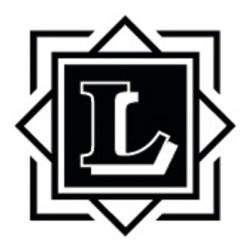Analysis
The claimants were the trustees of the St Andrew’s (Cheam) Lawn Tennis Club Trust (the trustees). The trustees sought declarations as to the beneficial ownership of land occupied by the St Andrew’s (Cheam) Lawn Tennis Club (the club) since 1938 (the land).
The church now known as St Andrew’s United Reformed Church Cheam (the church) was originally founded in the 1920s. From the church’s inception many of its members played tennis together and in 1930 they established a tennis club which was to become the club. The club’s first general meeting was held on 22 April 1937 when it adopted a constitution and rules. On 21 March 1938 the club held a general meeting to discuss the possibility of acquiring the land. On 18 April 1938, David Tweddle, a member of the club offered to purchase the land and rent it to the club. This was agreed. It would seem that Mr Tweddle purchased the land on 24 June 1938. The price paid was £750. Development works on the land were financed by loans in multiples of £50 carrying interest at the rate of 4%. The same people who were at that time trustees also acted as trustees of the club in connection with these loans.
At a meeting of the committee of the club on 8 July 1938 the trustees were authorised to take a lease from Mr Tweddle of the land (the lease) for a term of ten years from 24 June 1938 at an annual rent of £30 with an option to purchase the freehold for £750 (the lease). The lease was duly executed. The lease provided that the trustees would hold the lease and the freehold reversion if so acquired upon trust to sell the same with the consent in writing of the church with power to postpone sale.
On 11 July 1938 a trust deed was executed (the trust deed). The trust deed provided that the trustees were to hold the lease of the land and the freehold reversion upon trust:
- for sale with the consent of the church with power to postpone;
- to let the land to the club or such persons as the trustees may determine; and
- to permit the land to be used for the purposes of tennis by any persons or bodies connected with the church.
There was further provision that the trustees should apply surplus monies for the charitable purposes of the church and that upon the sale of the land the trustees would hold the monies for the purchase of another sports ground, the erection of any building connected with the church or for any other purpose connected with the church.
The club’s ground was opened on 16 July 1938 and the rent due under the lease was paid by the club. The club did not purchase the land pursuant to the option contained in the lease. On 12 January 1948, following an offer from Mr Tweddle, those persons who were probably the trustees entered into an agreement to purchase the land for £525 paid at the rate of £75 per year for seven years during which period the club would pay no rent but remain in occupation (the 1948 agreement). The 1948 agreement contained no reference to the trust deed. All instalments of the purchase price were paid by the club. The final instalment was paid in 1954. On 16 May 1955 Mr Tweddle’s personal representatives executed a transfer of the land to the people who were probably trustees at the time (the transfer). The transfer made no reference to the trust deed or the 1948 agreement.
By 2006 only 20 of the 91 members of the club were also members of the church and only nine of those were playing members. On 28 May 2006, the church wrote to the trustees asking them to consider whether the time had come to sell the land and make the proceeds available for the purposes of the church. The trustees sought the guidance of the court as to the beneficial ownership of the land. At the hearing the club submitted that the trust deed was invalid and the land was held on a resulting trust for the club. The church submitted that the trust deed was valid and the land could be sold and the proceeds applied for its use. The trustees took a neutral stance.
Held
- (1) It was fairly plain that the trust deed was an attempt to achieve the legally impossible: a perpetual trust for a non-charitable purpose, being to enable the members of the club to play tennis. Clause 8(c) of the trust deed empowered the trustees to buy another sports ground or contribute towards its purchase. No trust was attached to that clause and the only trust that could be implied was for use by persons associated directly or indirectly with the church. That was not a charitable purpose. Although clause 8(e) permitted the trustees to use the proceeds for any other purposes in connection with the church there were non-charitable purposes which may be connected with a church and it followed that these were not limited to charitable purposes. A gift for purposes, some of which are charitable and some of which are not, will fail. Accordingly, the trust deed was invalid.
- (2) The trust deed was not validated by the Charitable Trusts (Validation) Act 1954. In order for a trust deed to be saved by that act it was necessary that there could be no objection to an exclusively charitable application of trust property. The primary purpose of the trust deed was to benefit the club. If the trust deed were to be restricted to exclusively charitable objects for the church’s benefit the club would be deprived of the benefit it was intended to have and had had for the past 70 years. The club would certainly have a valid objection to an exclusively charitable application.
- (3) In circumstances where the express trust created by the trust deed had failed there could be no implied trust in favour of the church in different terms.
- (4) There was no resulting trust for the club. The acquisition of the land was not funded merely by the club but also:
- by a partial gift from Mr Tweddle who agreed to accept £525 for the land rather than what it was worth or what he had paid for it in 1938 and demanded no rent for the seven year acquisition period;
- by a partial gift from the lenders who agreed to forego the repayment of capital on their loans during the seven year period; and
- by partial gifts from the people who contributed to fund-raising activities for the purchase.
- The terms of the club’s rules prevented the members from dividing the assets between them. In such circumstances the partial gifts to the club for the purchase of the land fail as the club is not charitable.
- (5) Although the trustees had properly pointed out that, in circumstances where it was the intention of all concerned that the land should be held subject to the trust deed, the contributors to the purchase price of the land may have claims the correct conclusion was that the land was held on a resulting trust for Mr Tweddle’s estate. He was the largest donor and had he not made his offer in 1948 the trustees would never have acquired the land.
- (6) The trustees had at all times acted honestly and reasonably and if they were in breach of their duties to the true beneficial owners of the land they ought fairly to be excused under s61 Trustee Act 1925.
Continue reading "Phillipe & ors v Cameron & ors [2012] EWHC 1040 (Ch)"

